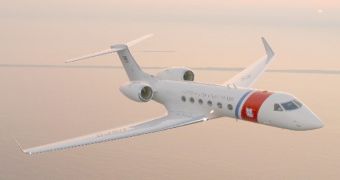The modified Gulfstream V aircraft employed by Harvard University will fly all around the world, from the North to the South Pole, and will accurately record various carbon dioxide (CO2) readings along the way, in an attempt to create the most comprehensive picture of the circuit of carbon in nature to date. The three-year mission will first head for the Arctic, after which time it will descend towards the South Pole gradually.
The main goal of this ambitious project is to amend and improve existing weather pattern changing models, and to come up with accurate new predictions for the future, which could mold actions and behavior, especially on the part of authorities, into coming up with new ways of preventing catastrophes related to floods and drought.
In a video posted on the National Science Foundation website, Cambridge professor of atmospheric and environmental science, Steven Wofsy, explains that “When we finish up, we’ll have a completely new picture about how greenhouse gases are entering the atmosphere and being removed from the atmosphere both by natural processes and by humans.”
“It’s the first time we’ve been able to look at the whole globe all at once. Nobody has ever done that. Satellites see the whole globe but they don’t see it in great detail,” he adds.
The plane will gather data from various altitudes over mountains, plains, and large cities, and will use them to put together a comprehensive picture of the amounts of carbon that are emitted into the atmosphere yearly, as well as of the quantities that are absorbed by trees, vegetation and oceans in the same time frame.
The great difficulty in elaborating an accurate weather pattern has thus far been that of incorporating precise carbon movement readings. And since no one knows exactly how much carbon is emitted, and how much is trapped in forests and ocean floors, no one can say if the overall weather trend is good or bad. And that's what “Hippo” is here to find out.

 14 DAY TRIAL //
14 DAY TRIAL //